This post is part of our Walk This Way series, designed to share The Walking Classroom experiences of teachers and students across the United States. This post provides a glimpse into Kathie Yonemura’s class.
Health always seems to be one of those subjects that is either hard to fit into the curriculum time-wise or I’m unsure how to assess it. The Walking Classroom teacher talking points, discussion questions, and quizzes have solved this dilemma!
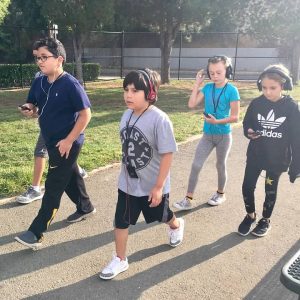 Podcast-Provided Health Lessons
Podcast-Provided Health Lessons
Although I don’t always give the quizzes, I use them as a guide for emphasizing the main ideas of the podcast. I love that each podcast begins with a conversational health lesson. My kids enjoy the banter between TWC kids and Mrs. Fenn.
Listening to the podcasts throughout the year reinforces health concepts such as the benefits of exercise. Students learn that exercise boosts mood, brings oxygen to the brain, and keeps people focused and alert.
Covering All Aspects of Health
Our health standards not only focus on the more obvious physical parts of health, but also on mental and emotional, or family and social aspects of health. Most students can identify healthy physical behavior such as food choices, exercise, sleep, etc. However, it is the mental and emotional, and social traits of a health that affect students in the classroom (and on the playground).
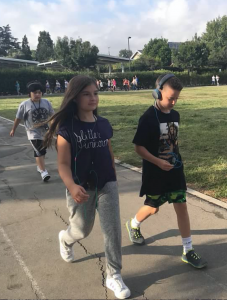 The Walking Classroom has many podcasts that address physical health with topics such as Dangers of Smoking and Tobacco (found in Complete-#125, 4-#12), Exercise and a Healthy Heart (found in Complete-#154, 4-#20, STEM-#44), and Developing Healthy Habits while Young (found in Complete-#12, 4-#33, 5-#18). Talking about your Feelings when Stressed (found in Complete-#63,4-#52) addresses mental and emotional health.
The Walking Classroom has many podcasts that address physical health with topics such as Dangers of Smoking and Tobacco (found in Complete-#125, 4-#12), Exercise and a Healthy Heart (found in Complete-#154, 4-#20, STEM-#44), and Developing Healthy Habits while Young (found in Complete-#12, 4-#33, 5-#18). Talking about your Feelings when Stressed (found in Complete-#63,4-#52) addresses mental and emotional health.
And, social aspects of health are addressed too, through topics like Peer Pressure (found in Complete-#60, 4-#54), and Teacher and Student Relationships (found in Complete-#27, 4-#62).
Additional Activities . . .
These podcasts become the springboard for discussion during our class meetings. Students create large triangular collages; each vertex is labeled with one of the three types of health: physical, mental/emotional, family/social. Students bring in pictures or we cut out pictures from magazines and sort them into the health categories. This is a powerful activity, showing a well-balanced view of health.
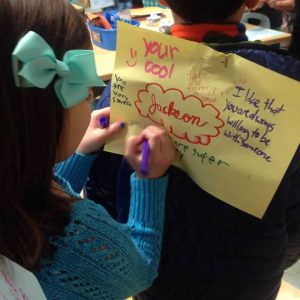 We also do many team building activities that focus on social relationships and mental health. A favorite activity is called Thanks for the Compliments. Each student writes his/her name on blank paper, then a peer tapes it onto their back. Students walk around the room, writing specific compliments on the backs of their classmates.
We also do many team building activities that focus on social relationships and mental health. A favorite activity is called Thanks for the Compliments. Each student writes his/her name on blank paper, then a peer tapes it onto their back. Students walk around the room, writing specific compliments on the backs of their classmates.
After 10-15 minutes, kids take off their compliment paper and read what was written. Their faces beam with delight! The students keep these compliments taped to their desks to remind themselves of their positive traits.
. . . with Yoga in the Mix
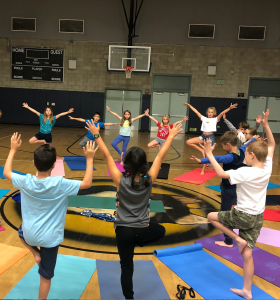 Yoga is a regular part of our physical education program, to not only build our physical strength, but to develop positive mental health. Students look forward to each new pose, as they build stamina and focus. They have learned to use yoga breathing and meditation to relieve stress and to be kind to themselves.
Yoga is a regular part of our physical education program, to not only build our physical strength, but to develop positive mental health. Students look forward to each new pose, as they build stamina and focus. They have learned to use yoga breathing and meditation to relieve stress and to be kind to themselves.
My students love the connections to overall health and the repeated messages they hear while listening to TWC podcasts! (And of course, they are getting exercise while they learn!)
Kathie Yonemura
Fourth Grade Teacher
Hesby Oaks Leadership Charter School



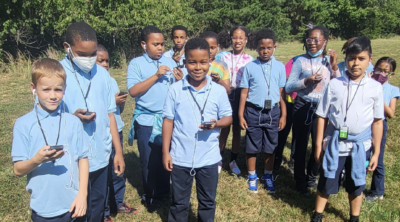
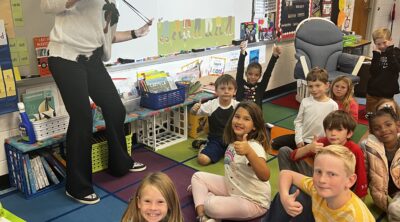
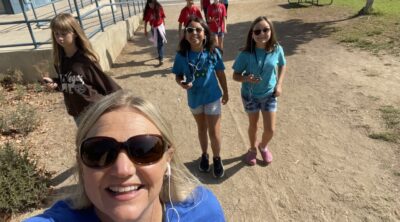
Leave a Reply